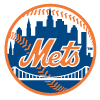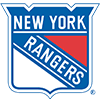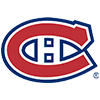This Week's Scouting Tip: An Open Forum on the Dynamics of Closing
The non-waiver trading deadline just passed, and while it was extremely active, there was one very distinct element missing when compared to most other deadlines. Virtually no "closers" switched uniforms. Closer Francisco Rodriguez went from the Mets to the Brewers well before the deadline, and several high profile set-up men were dealt, but none of the other closers rumored to be available - including the very well-recognized Heath Bell and several other established end gamers - were actually sent to another team. Is there an underlying reason more set-up men were dealt while no one seemed to be willing to pay the price for an established closer? Has something changed in the overall view of the closer's role that has shifted the whole dynamic with regard to this very specific task in the game of baseball? As you have probably noticed, the Notebook is rarely presented as a forum for stat analysis or number crunching - it's an opinion column that explores many of the variables in the great sport of baseball that aren't easily measured with numbers. The evolving dynamics of closing provides just such a topic for this week's discussion. Let's take a look ...
Closers: Yesterday and Today ...
Not so long ago an elite closer was an extremely valuable piece of a team's competitive makeup. Not only did a very reliable closer in effect shorten the game - for example, the Yankees and Mariano
This Week's Scouting Tip: An Open Forum on the Dynamics of Closing
The non-waiver trading deadline just passed, and while it was extremely active, there was one very distinct element missing when compared to most other deadlines. Virtually no "closers" switched uniforms. Closer Francisco Rodriguez went from the Mets to the Brewers well before the deadline, and several high profile set-up men were dealt, but none of the other closers rumored to be available - including the very well-recognized Heath Bell and several other established end gamers - were actually sent to another team. Is there an underlying reason more set-up men were dealt while no one seemed to be willing to pay the price for an established closer? Has something changed in the overall view of the closer's role that has shifted the whole dynamic with regard to this very specific task in the game of baseball? As you have probably noticed, the Notebook is rarely presented as a forum for stat analysis or number crunching - it's an opinion column that explores many of the variables in the great sport of baseball that aren't easily measured with numbers. The evolving dynamics of closing provides just such a topic for this week's discussion. Let's take a look ...
Closers: Yesterday and Today ...
Not so long ago an elite closer was an extremely valuable piece of a team's competitive makeup. Not only did a very reliable closer in effect shorten the game - for example, the Yankees and Mariano Rivera have been playing eight inning games for years - but the mystique of that ace closer could impact the entire philosophy of a game. Starters knew that only needed to get the ball to that end gamer. If a set-up man needed to enter the game, he too knew his job was specifically to turn the mound over to that closer with a lead. The final outcome was virtually assured, a given. And, the man who would be responsible for delivering that hard earned win was never in doubt. The only "committee" ever involved in it was the Hall of Fame nominating committee once that ace closer was eligible for induction. Back then, did you ever have to contemplate who would enter a game in the ninth with the Padres leading 2-1? Did they even need a phone to tell Trevor Hoffman it was time? I don't think so.
There are a few examples of old-time endgame execution today. The Braves have begun to establish their claim to a victory as early as the seventh inning. If trailing, the opponent can expect to see Jonny Venters in the eighth inning and Craig Kimbrel in the ninth. In essence, their opponents are forced to adopt an approach that dictates the necessity of scoring and establishing a lead in the first seven innings of a contest. They only have 21 outs to work with, not the 27 that make up a typical game. The Nationals are following a similar path with Tyler Clippard and Drew Storen, although they are still probably a notch behind Atlanta in their development of an aura of invincibility. These trends suggest that the pendulum might be swinging back to days of old, and that the recent antics of playing musical closers we have seen from many teams may now be recognized as detrimental to the team's long term success. The result could be a rise in the perceived value of perhaps the game's most specialized player. It could be a major reason very few closers actually moved on to another team at the non-waiver trading deadline this year. Perhaps, after a few years of commoditization, the value perception has shifted somewhat, and they were simply too expensive.
That said, you might well ask, where does that leave the typical fantasy owner? If the dynamics are changing, shouldn't fantasy players be prepared to adjust? The simple answer is, yes. If closing does swing back to being a more clearly defined role, you will want to be able to recognize the traits that can often predict a successful closer in the making. Perhaps most importantly, you might want to reevaluate the tactic of bottom-feeding for saves based on the perpetual turnover of end game options. It won't happen overnight, and there is always the possibility that the pendulum could unexpectedly reverse direction again, but there are hints circulating that suggest closers could one day soon be far more "locked in" to the role. It would appear teams are again looking for real closers. Obviously there will still be injuries which require at least a fill-in replacement, some pitchers anointed as closers will fail (we want to look for ways to help avoid those), and occasionally a total surprise will jump out of the pack and establish himself as a solid end gamer. However, I want to share some of the things I look for that has made it a bit easier to identify both potential for long term success in pitchers already in the role, and clues that can sometimes classify a pitcher as a good bet to close in the future.
Here are some things to look for in a potentially dominating closer:
- Money still talks - although hopefully it may not talk quite so loudly in the future. When a team invests a large sum of money in a pitcher they identify as their closer, they will generally still give that pitcher an inordinately long leash. Just be aware that this type of signing could block a better option, and could make it harder to predict the eventual opportunity for someone else to step in. Kevin Gregg in Baltimore and Brandon Lyon in Houston are good examples of pitchers better suited to other roles being repeatedly locked into a closer's gig.
- Closing is gradually becoming a defined role much earlier in a pitcher's career. For example, Drew Storen was drafted in the first round as a closer. Some pitchers are assigned that role in the minor leagues to better develop the skills they will need to achieve success at the major league level. Sometimes, a pitcher will be tried as a starter, but will then be shifted specifically to closing when it becomes evident they are better suited to critical situation appearances that require a very definitive skill set and mental makeup.
- Electric "stuff" is always going to be a desired trait for a closer. Mid-upper 90s heat and at least one other plus pitch will move a pitcher into the consideration set. In fact, having only two plus offerings is frequently the reason a former starter gets moved to the bullpen. Survival as a starter in the major leagues requires a minimum of three solid pitches. While teams will almost always look at the other components of predictable success, having the arm to literally blow away the opponents with dominating effectiveness is part of the preferred aura.
- That said, a pitcher can be a hugely successful closer without the cannon for an arm. Look at the two closers I mentioned earlier who are two of the very best to ever play the game - Mariano Rivera and Trevor Hoffman - neither has/had a 100+ mph fastball, but they had, in abundance, the most important facet of the closer's repertoire, the ability to completely take over the game. Call it "fear factor" or a "dominating presence" (as opposed to the submissive standing in the batter's box), but the bottom line is, the opposing dugout (and the crowd) may not notice eight other players on the field. I cannot stress this observation enough. If your closer enters the game and you are saying prayers and/or crossing fingers, the other team likely senses the same vulnerability. Note your own reactions!
- I have already mentioned needing an electric arm and/or at least two very good pitches, but that does not = great closer. Closing is highly emotional, usually involves a rather large dose of adrenaline, and is best practiced when the pitcher is literally on the edge. That's why a closer, often an elite closer, can stumble badly when brought into a non-save situation - the edge just isn't there. The most likely to be successful will typically thrive as the pressure mounts (think about that guy who always seems to be better after the bases are loaded), and may appear almost indifferent when the game is not hanging in the balance. Again, track the pitcher's reaction to stress. If the focus/performance level rises with the stress level, you may be watching a closer coming of age.
Now, let's check this week's Scouting Notebook ...
This continues our weekly feature scouting pitchers of interest. We won't normally cover the elite guys in this column, rather this forum is dedicated to finding pitchers who might be available or obtainable in your league. Let's get started with this week's featured arms, focusing on closers or potential closers:
The New Breed ...
Drew Storen (WAS)- I would like to believe there was a reason Storen didn't end up in Minnesota at the trade deadline. As much as the Nats would have liked to add a talent like Denard Span, Storen is the prototype closer of the new generation. Bred, raised and trained to catch fire with the game on the line, he is showing all the signs of being that guy who can almost end a game before he ever throws a pitch. He has that electric arm, and he is quickly coming to the dominating mound presence.
Craig Kimbrel (ATL)- Like Storen, although probably a little ahead in both stuff and attitude, he too defines the new breed closer mentality. He and Venters have already begun to carve out their own space in the end game scenario much like Mariano Rivera and John Wetteland did during Rivera's apprenticeship. Venters has a closer's stuff and psyche, but when combined with Kimbrel, the two of them literally act like they own the events after the seventh inning. That's amazing for pitchers so young.
Established excellence ...
Jonathan Papelbon (BOS)- One of the most successful closers to ever enjoy, on a regular basis, reading about his own impending demise. Papelbon has very good, but not overwhelming stuff, and it's not unusual to see his ERA hovering up among the less impressive ranks of other far less accomplished relief pitchers. However, when you need a game to end in your favor, he is among the best at making it happen. The definitive adrenaline/focus guy, Papelbon would probably be a total failure at middle relief.
Jose Valverde (DET)- Very similar to Papelbon, although a bit more animated, he is frequently ineffective in "who cares" appearances leading to a higher than anticipated ERA. This year he has produced rather ordinary stats/numbers, but at this writing he is 32-for-32 in save opportunities. Too many baserunners? Probably, but not the ones that count. Too few strikeouts? Maybe, but he always gets the one he really needs. Does anyone really notice the other players on the field when Valverde is involved in a one-run game with the Tigers looking to lock down a win?
Hoping to make a name ...
Mark Melancon (HOU)- Regular readers will recall him being frequently touted as the likely heir to the closer's role in Houston. Lyon was ineffective, and then had surgery which cleared Melancon's path. He has good stuff and is displaying a tendency to pitch at his best when it really counts. He's not quite there yet, but his approach and ability suggest he has the potential to end up being a very reliable end gamer. Unfortunately, the Astros don't often provide him with many opportunities to really prove it, and he too frequently pitches in those less critical situations.
Jordan Walden (LAA)- Once a highly regarded young starter, Walden never really developed a good feel for a third (or fourth) pitch and the Angels decided to see how he would react to closing. There was never any doubt about his electric stuff, he can hit triple digits in the short bursts required from a closer, and he has already shown the tenacity to become a truly dominant closer once he refines his command. Once he can spot his pitches consistently, and it's coming, he will be a monster.
Possible closers in waiting ...
Koji Uehara (TEX)- He has closed, very efficiently, but he is not, by any definition, the prototypical end gamer who throws smoke and breathes fire. Uehara is cool, calculating ... and dominating. He rarely breaks 90 mph without a strong tailwind, but he spots his pitches with the accuracy and precision of a surgeon or a fine watchmaker, as he seems to dismantle the opposing hitter. Perhaps it's at least partially a product of the Japanese culture. Winning the battle with honor is paramount, and he can do that again and again. He is not a kid, so it remains to be seen if a team in the United States will let the wily veteran do what he does best on a long term basis.
Kenley Jansen (LAD)- Jansen was a position player who hit like a pitcher until just a couple of seasons ago. Now he is a pitcher with one of the most electric arms in the game and nobody cares how he hits. Javy Guerra has done a respectable job as the Dodgers closer, but I firmly believe he is just keeping the mound warm for Jansen who should eventually step into the role. Like Walden, his stuff is overwhelming, and he too just needs to refine his command of the strike zone to become every hitter's worst nightmare. He was recently hospitalized with heart palpitations, so hopefully he can get past that little setback and channel his adrenaline into that amazing arm.
Some short takes on other notable pitchers:
Jeff Karstens (PIT)- Somewhat predictably, Karstens and most of the other Pirates starters are suffering some pretty severe stat adjustments after their collectively good early seasons. He, Charlie Morton, Paul Maholm, and Kevin Correia all represent high risk/low reward options right now, and Ross Ohlendorf could soon join that group.
Phil Humber (CWS)- I still love his curveball, but I also still believe the halo is wearing off (or maybe I should say has worn off). The White Sox say they may go back to a six-man rotation with the arrival of newly acquired Zach Stewart faring pretty well in his first Chicago start. Humber is probably a risky play going forward.
Nathan Eovaldi (LAD) - There is certainly some hop on this kid's fastball. I really don't think he's quite ready for prime time over the long term, but if the Dodgers keep giving him the ball every five days, he could get by for awhile on his stuff alone. That equates to a useful halo effect pitcher for several starts. It's all up to how the Dodgers use him.
Chien-Ming Wang (WAS)- He has been relatively ineffective in his first couple of starts after being gone for about two years, but there have been some positive signs, and the Nationals probably want to see if he can be a useful piece in their future plans. Expect a lot of shuffling going forward as Washington heads into evaluation mode.
Jake Arrieta (BAL)- Don't forget about him at next year's draft. He dealt with pain caused by a fibrous mass on his elbow for most of the season so his numbers don't really reflect his advancement. Surgery to repair the problem will end his year, but he is expected to be 100% for spring training. List him as a major sleeper candidate.
Hiroki Kuroda (LAD)- I read a story with a Kuroda interview regarding his decision to not waive his no-trade clause when it could have meant a post season trip. It was basically belief in the importance of the personal commitment he made to the Dodgers. He is focused on that commitment right now, and it could mean a very strong finish.
Mike Minor (ATL)- Patience is the word with Minor. He got an opportunity with Jair Jurrjens going on the disabled list, and he pitched over the weekend. Reports indicate Jurrjens will be back when eligible so this rotation stint could again be short. Atlanta is facing a real challenge in finding room for so many high-ceiling young pitchers.
Alexander Cobb (TB)- The biggest problem in Tampa is also figuring out how to get starts for all of their talented arms. Cobb pitched well but is now on the disabled list with a hand problem. That delays the decisions for a bit, but Matthew Moore is knocking on the door. He is likely to be in the pen late this year but a must own starter in the future.
Kyle Gibson (MIN) -There was a lot of buzz recently that he could get a call up soon, but elbow problems have turned the buzz into serious concerns. That said, look for Liam Hendriks to possibly move up the Twins food chain. He is a pretty good bet to see some MLB innings once the Twins run up the white flag, and he is definitely worth a look.
Hisanori Takahashi (LAA)- The versatile Takahashi will take over the awful Joel Piniero's starting spot and he could become fantasy relevant pretty quickly. Starters who qualify as relievers can be a huge asset in some league formats and Takahashi probably fits that description. The potential to be reasonably successful is a bonus.
For some of the most in-depth coverage of all things pitching in fantasy baseball for 2011, visit www.bogfella.com and be sure to follow @RotoWire and @bogfella on Twitter.






















